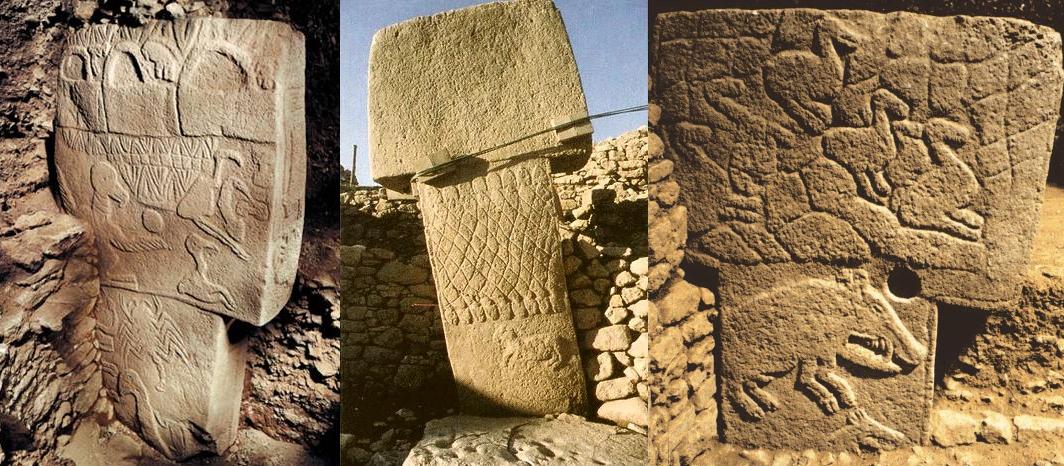Göbekli Tepe is an archaeological site atop a mountain ridge in the Southeastern Anatolia Region of modern-day Turkey. It was founded about 11,500 years ago, and abandoned about 9,000 yrs ago.

Göbekli Tepe is a stone-age mountain sanctuary. Radiocarbon dating as well as comparative, stylistical analysis indicate that it is the oldest religious site yet discovered anywhere. This “cathedral on a hill” was a pilgrimage destination attracting worshippers up to 150 km.

An hypothesis says that was a central location for a cult of the dead and that the carved animals are there to protect the dead. Göbekli Tepe changes everything. If indeed the site was built by hunter-gatherers as some researchers believe then it would mean that the ability to erect monumental complexes was within the capacities of these sorts of groups which would overturn previous assumptions.

Göbekli Tepe raises more questions for archaeology and prehistory than it answers. It remains unknown how a force large enough to construct, augment, and maintain such a substantial complex was mobilized and compensated or fed in the conditions of pre-sedentary society.

Scholars cannot interpret the pictograms, and do not know for certain what meaning the animal reliefs had for visitors to the site; the variety of fauna depicted, from lions and boars to birds and insects, makes any single explanation problematic.